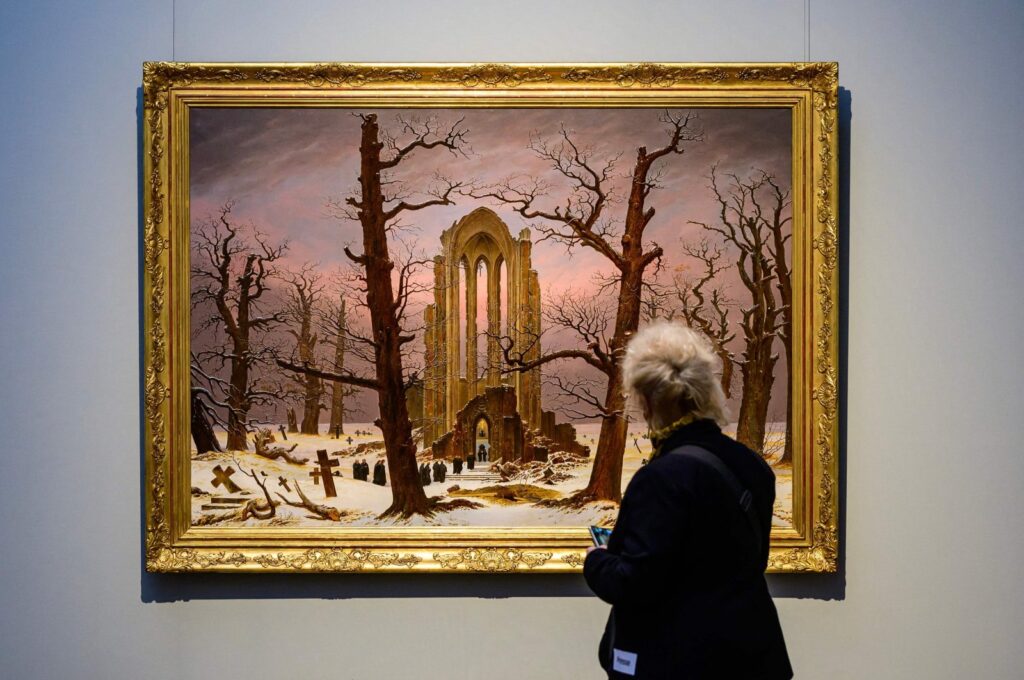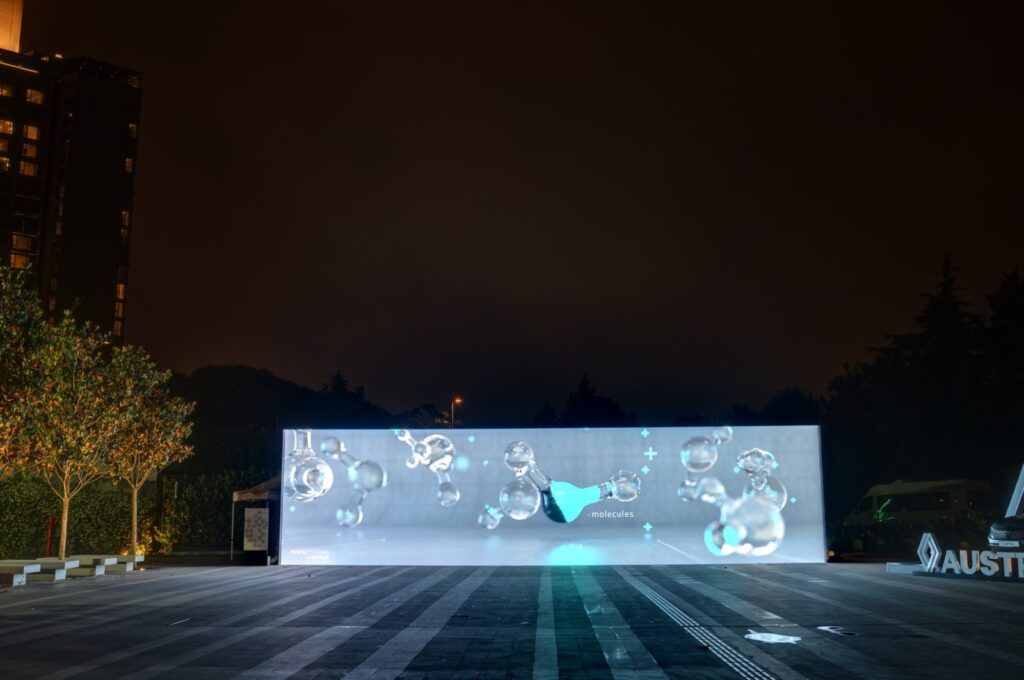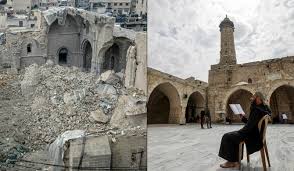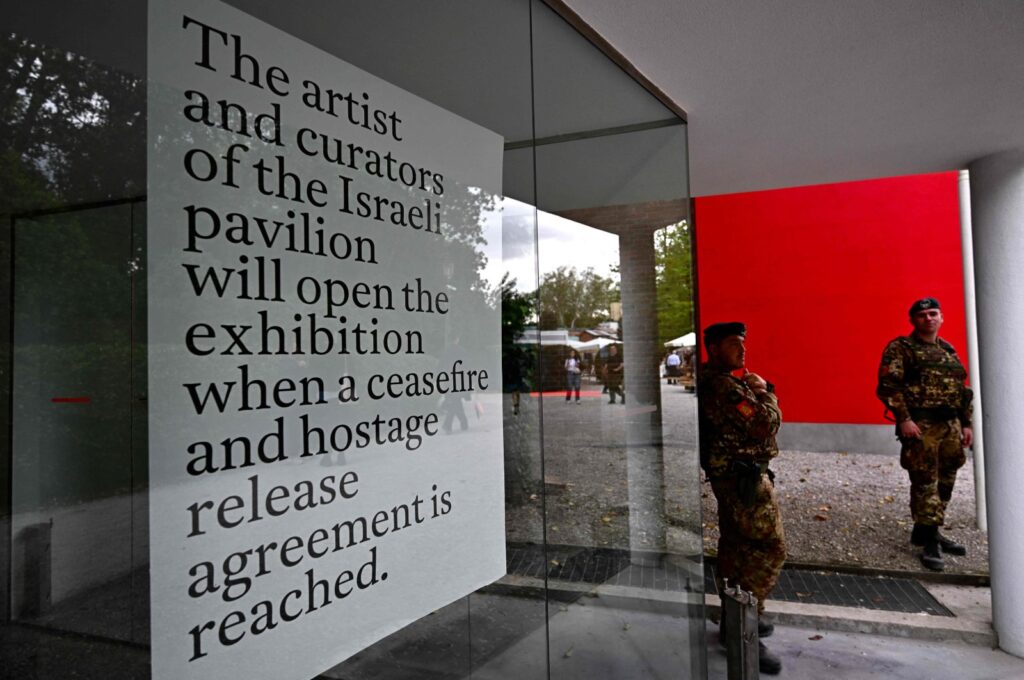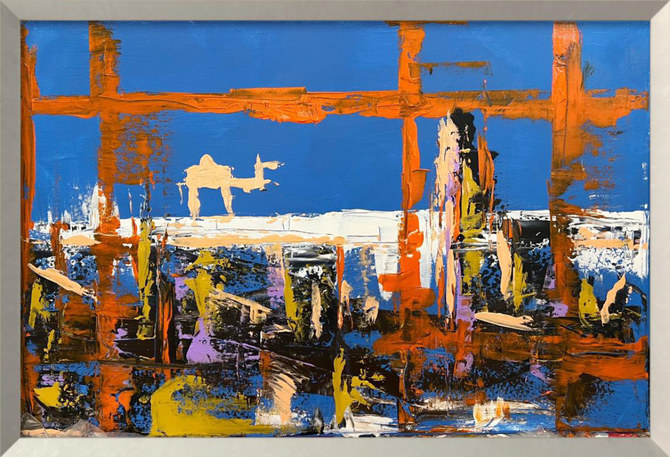Maan Jalal
Ziad Al Najjar’s first solo exhibition, Under Your Eyes, is more than a suitable title.
The Emirati artist’s body of work — displayed at Tabari Artspace in the DIFC until January 27 and comprising of silkscreen prints and works on canvas — insinuates much more than the eye can see.
His pieces are a collection of large and small works, connected through a soft, earthy and pastel colour palate, with free, emerging, organic shapes and compositions.
Pigments, stains and swaths of colour are layered over each other with images emerging through Al Najjar’s subtle technique of light, shadow and mark-making. The works emanate energy on closer observation — conventionally feminine, rooted in nature, connected to concepts of spirituality and dual perception.
Each work looks like an accumulation of thoughts and imagery rather than a constructed pictorial field. With no hard lines or a directed pull within the frame, Al Najjar’s work is complex in its organic nature, a manner of creating art that feels instinctual rather than formulaic.
“I don’t have a preconceived idea of how it’s going to be or what the painting is,” Al Najjar, 21, tells The National.
“It’s a very ‘call and response’ thing. I’ll be working and then, unless I have a very clear idea about what the next step is, I’ll take a moment to think because, if I force it, it shows.”
Al Najjar explains that he often works on more than one painting at a time. He switches between pieces of unstretched canvas when it feels he’s reached a stagnant point with one work. It’s an attempt to refresh his train of thought, with his instincts guiding him as he works.
“The approach to each of these paintings is very intuitive,” he says.
“I like to think of them as a very natural process. I’m also constantly exploring what new things I can do, new techniques, figuring things out, expanding on them as I work.”
It is, in itself, an art, following and honing in on and allowing intuition to guide art-making. This cerebral, intangible process may seem natural, but it is challenging and a testament to Al Najjar’s maturity as an artist for someone so young.
“I took a leap into it and embraced it,” he says on how he learned to follow his instincts when working.
“It’s a difficult process, because sometimes … I know I have a process, I have a technique and I know the way I approach things, but what I’m going to make next, for example, I’m not exactly sure.”
Set to graduate from his bachelor of fine arts degree at the School of the Art Institute of Chicago in May, Al Najjar explains that his aesthetic is very different four years ago. His work was hard-edged and representational, influenced by the Chicago art scene and wider community.
As his own style started to take shape from within the scope of his immediate environmental influences, Al Najjar found himself looking to the past as another source of inspiration.
While the body of work in Under Your Eyes may at first feel like a free-flowing accumulation of colours and shapes, very quickly, images appear. Outlines of skeletal forms, profiles of bodies, shapes of flowers, petals flying, bird and dog-like silhouettes, simplified motifs appear and disappear from beyond the layers, within the spaces, through the colours, semi-recognisable, instinctually familiar.
During his studies, while learning about western art history, Al Najjar searched for a period of history he connected with.
He became interested in Islamic art produced between the 13th and 17th centuries, including Persian miniature depictions of animal forms and natural elements. These motifs stuck a chord for their simplistic rendering yet their deep significance across cultures.
In varying shapes, sizes and forms, these images found themselves in his organic, cellular, abstract compositions. While not directly creating a narrative, they infuse his work with associations and references for the viewer to surmise and feel in tune with.
“I’ve always had animals and I feel a certain connectedness with them,” he says.
“They are a different way of looking at our ecosystem or the world. Rather than looking to other people, you’re looking at these animals, which we can only have so much of an interaction with.”
More than any other animal, the goat frequently appears across many of the works. Aloof, powerful and submissive, the goat in many scales and poses, seen through a veil of colour and layers, appears as more than one symbol, if any at all.
“Culturally, they are very significant animals,” he says.
“There’s a lot of context behind goats and in my own experience, they are such a goofy animal. They are so funny yet they are also so significant in other ways. And then also the nuances of how they’re used … they are a representation of Satan, for example, and here they are a sacrifice during Eid.”
Obvious, hidden and stylized, the free-flowing patterns, the forms and shapes that float and bleed into one another, create a soft and almost perfect symmetry, a field where some subconscious part of the viewer can visually play.
“There’s definitely images or illustrations I have in mind, which I do kind of want to use in paintings here and there,” Al Najjar says.
“I always make sure not to make something too obvious. I like to leave enough breathing room for someone to potentially see that or see something else.”
Courtesy: thenationalnews



